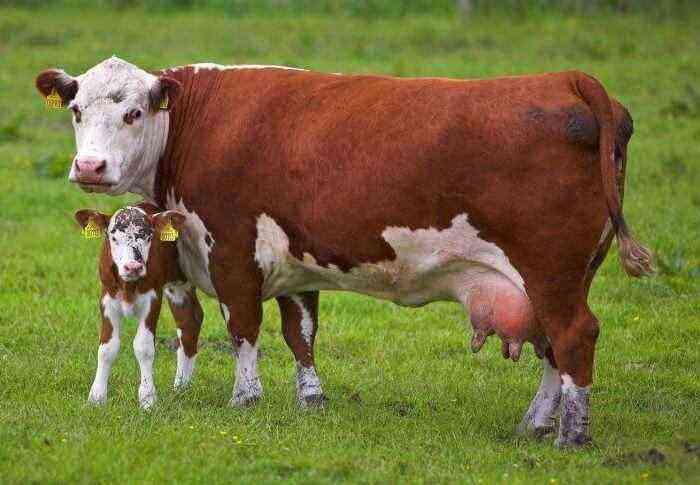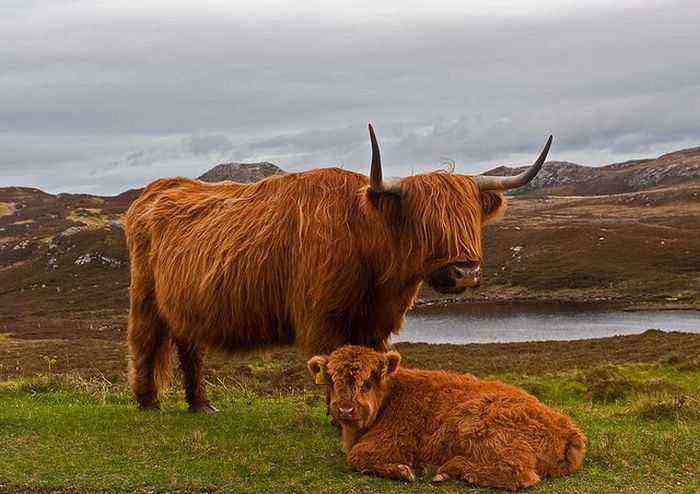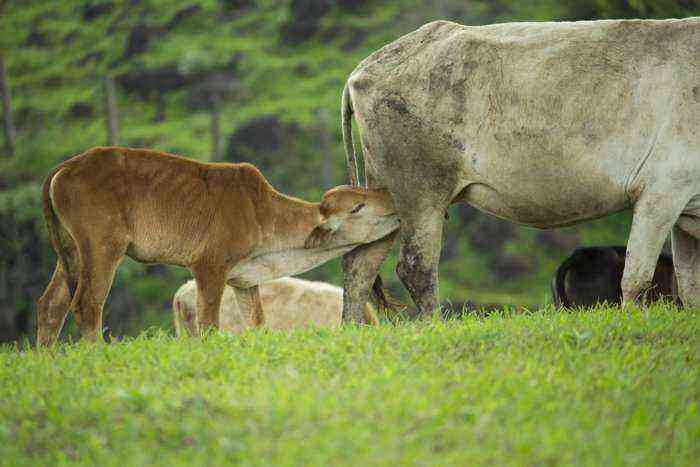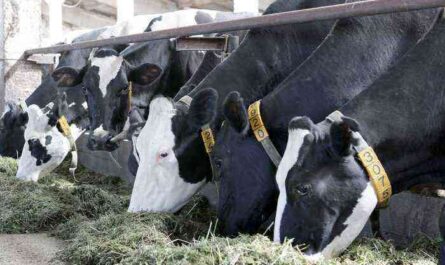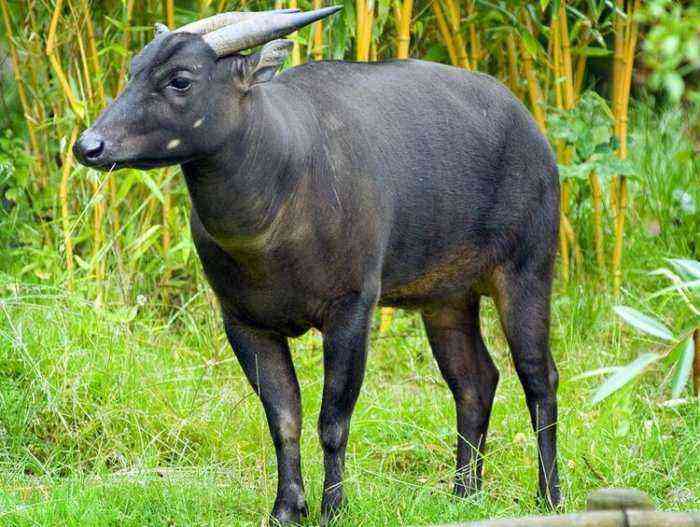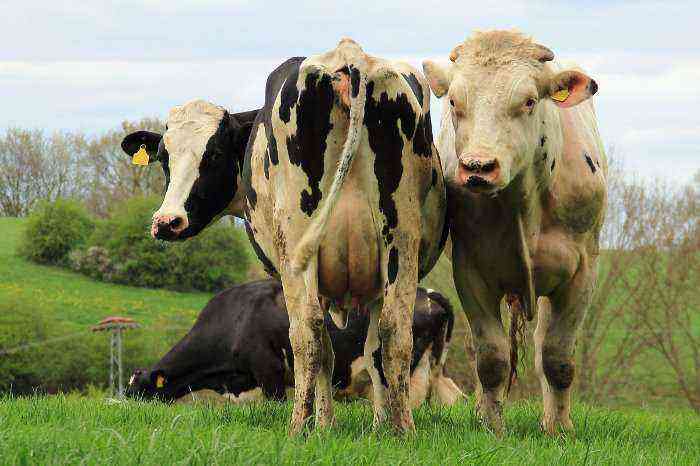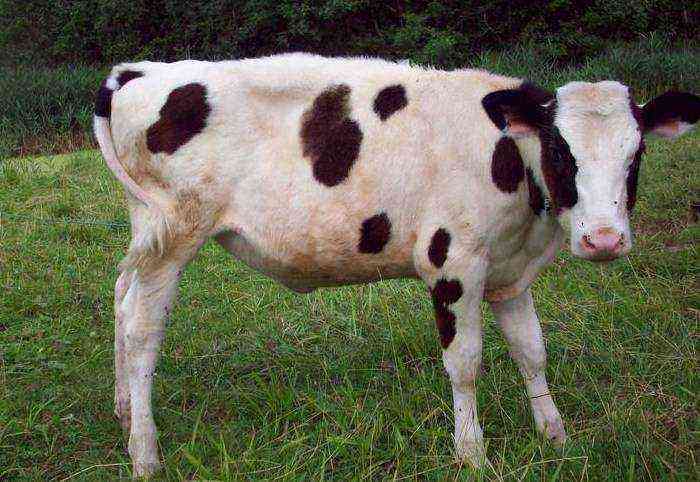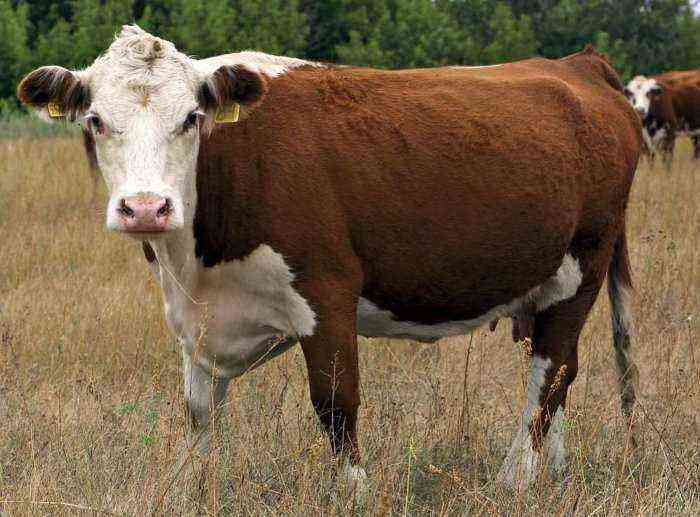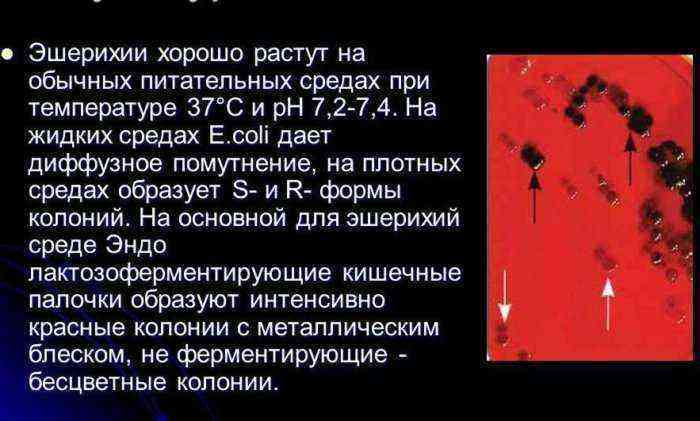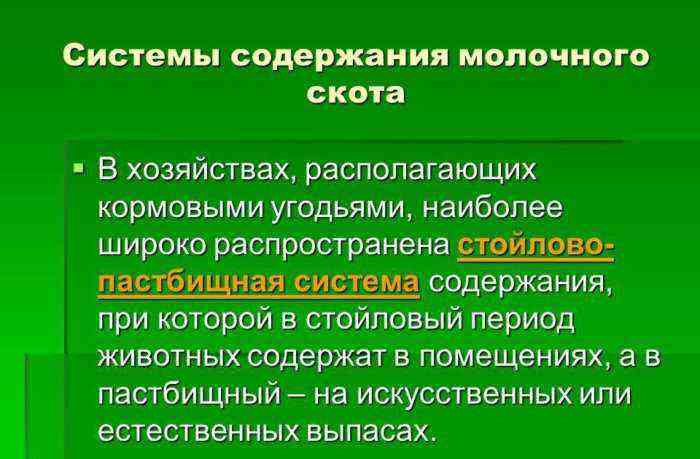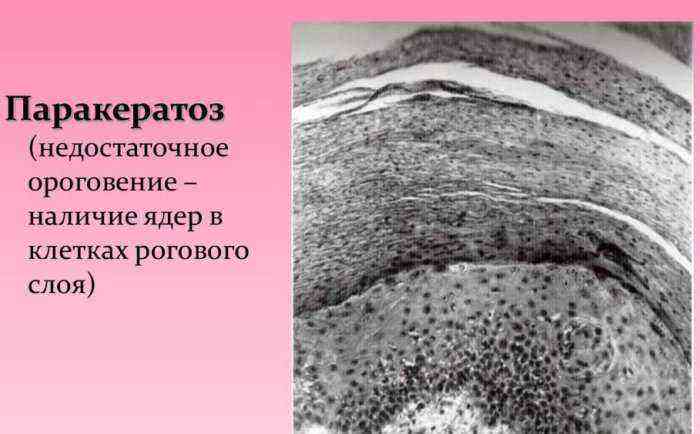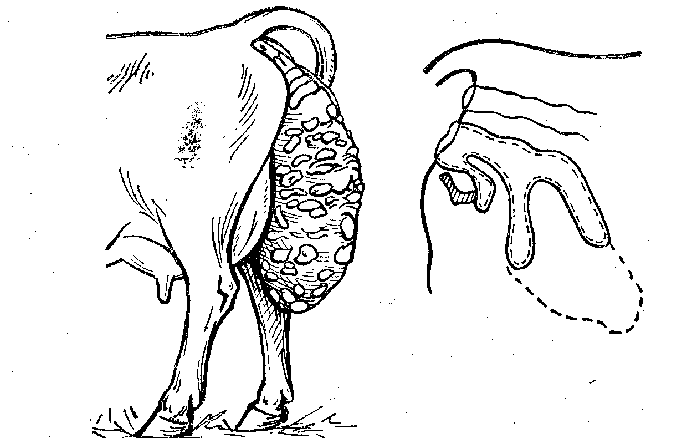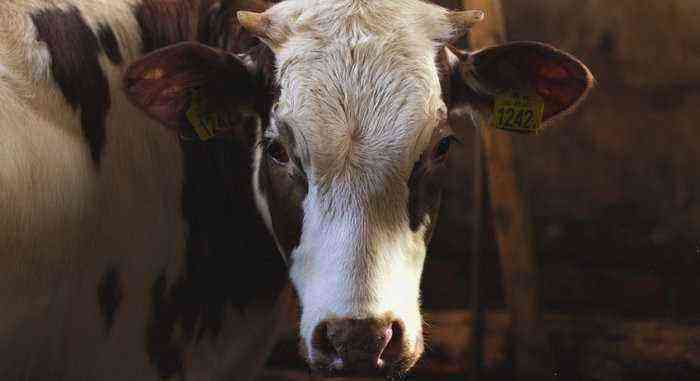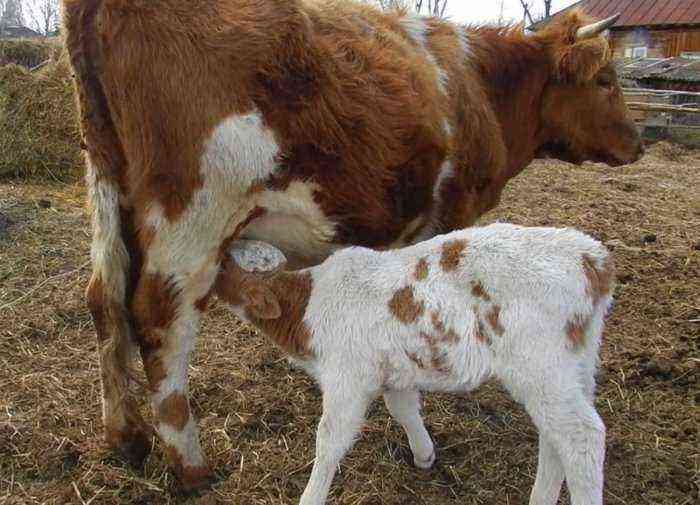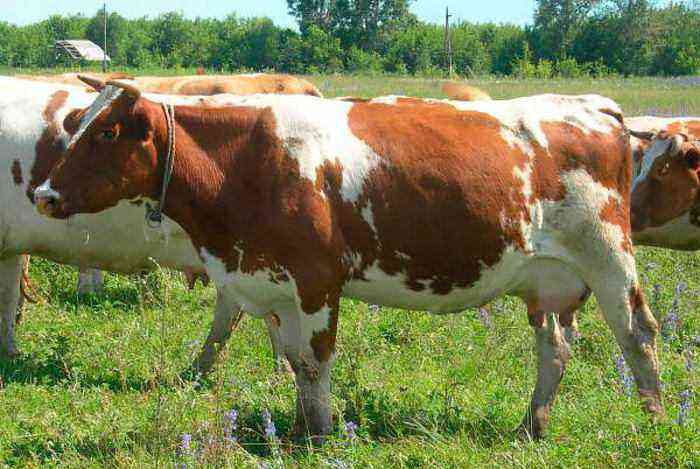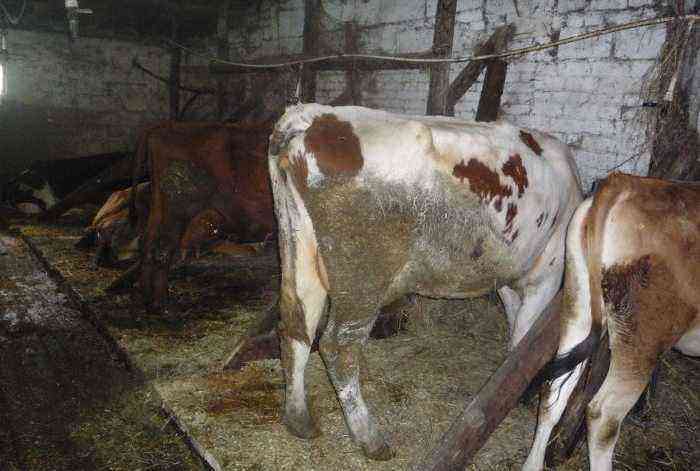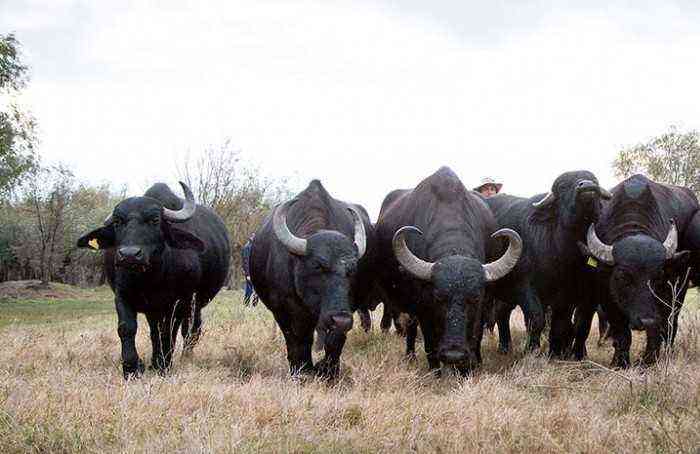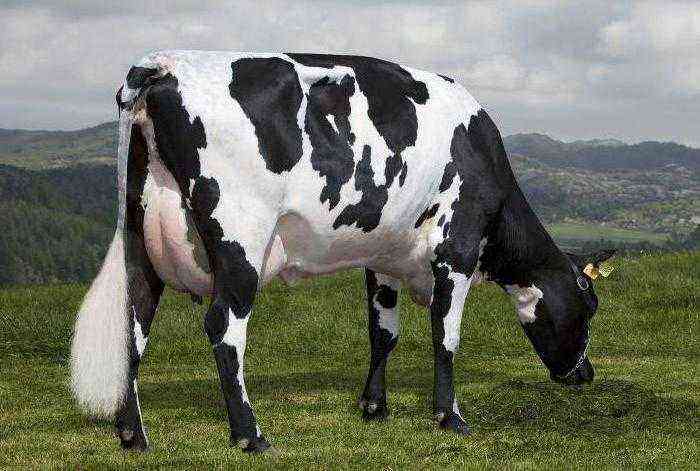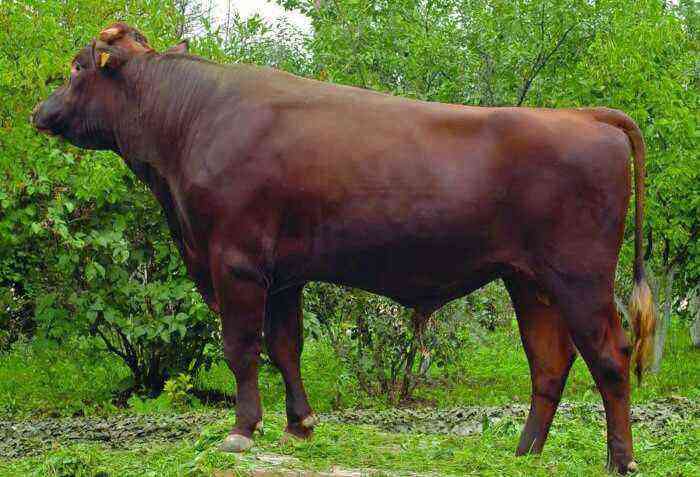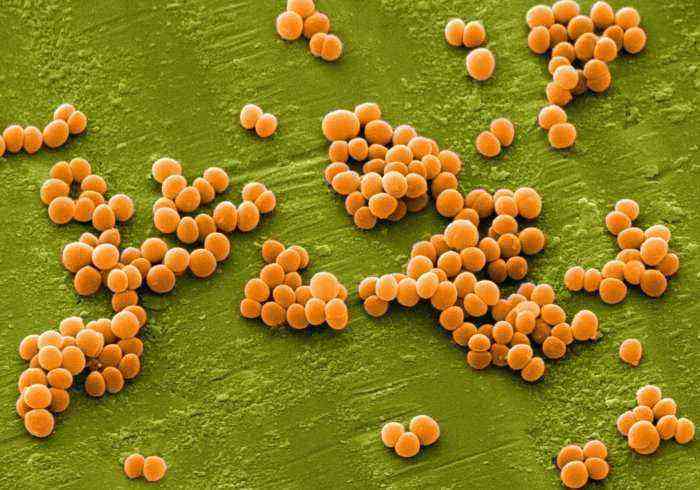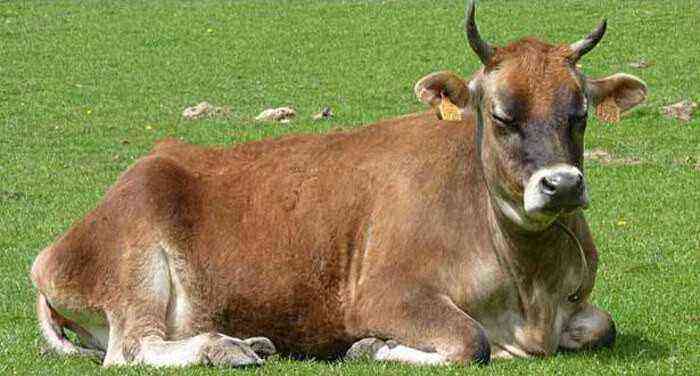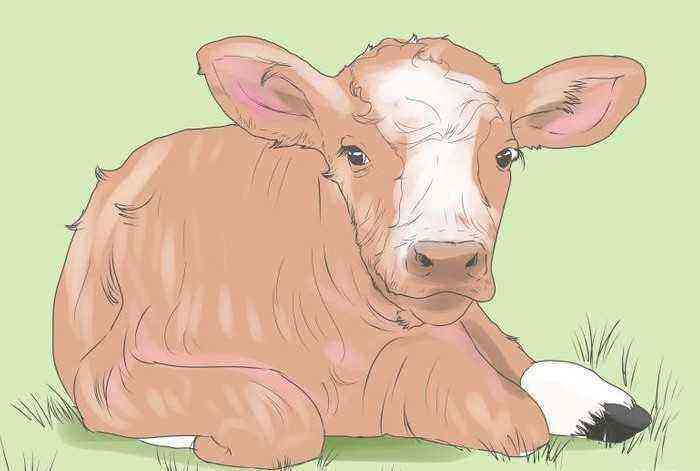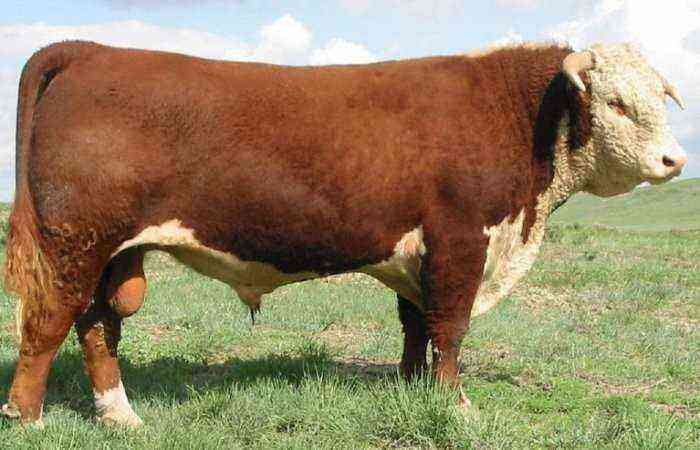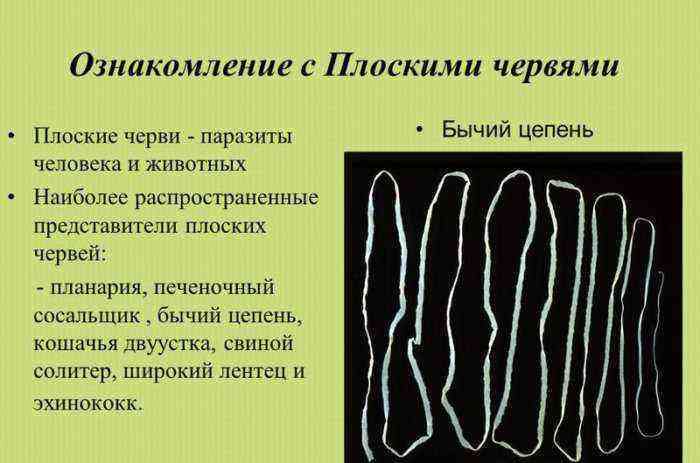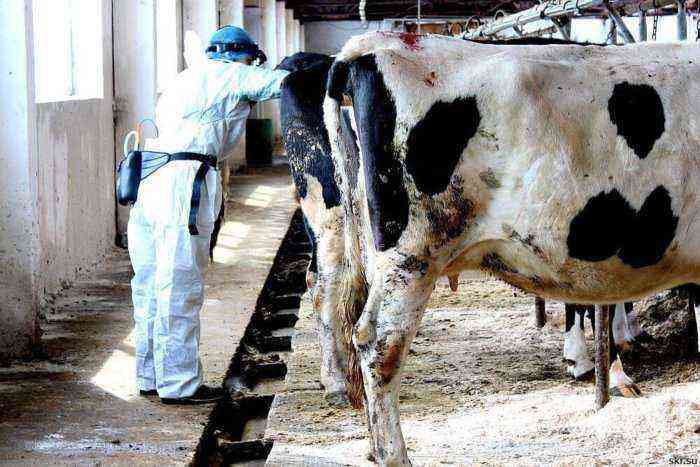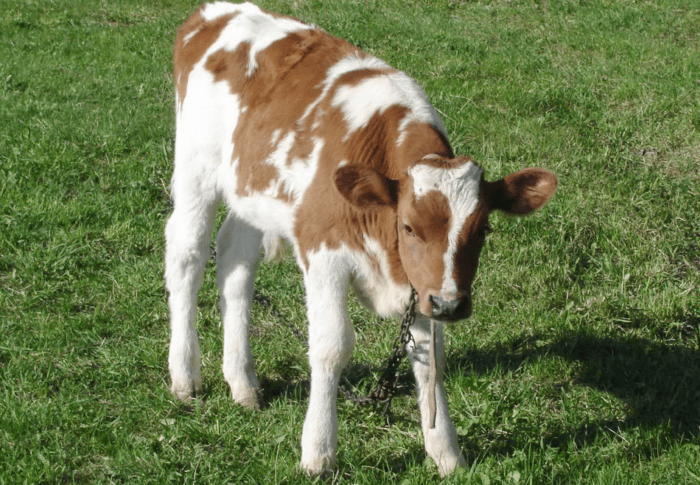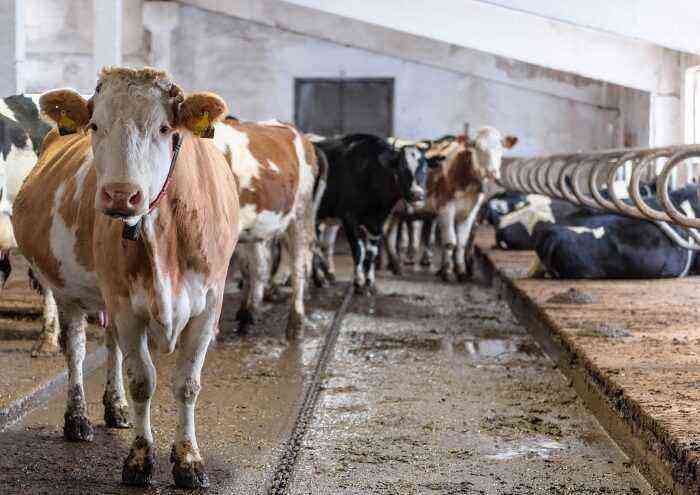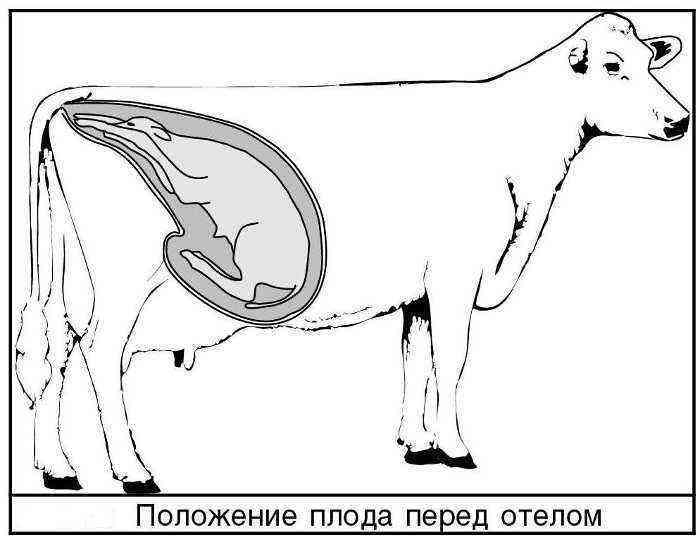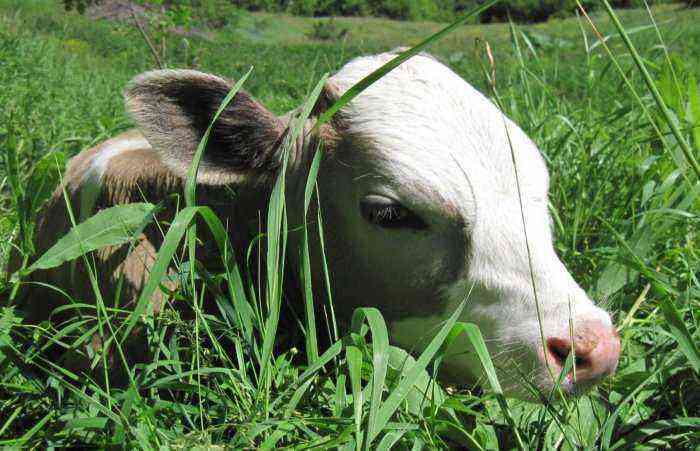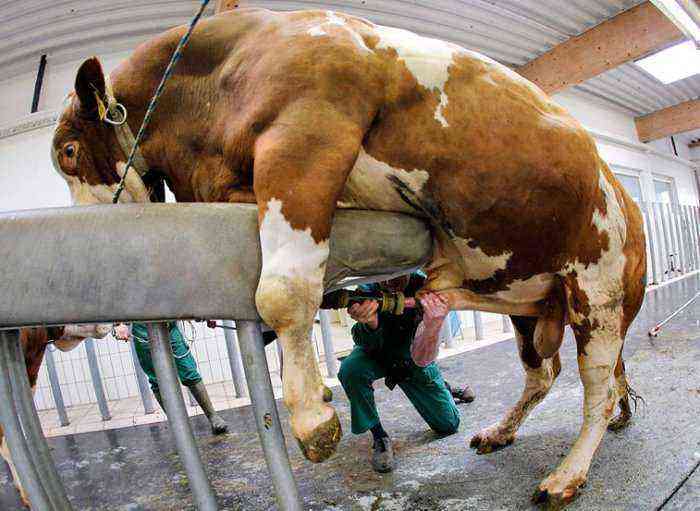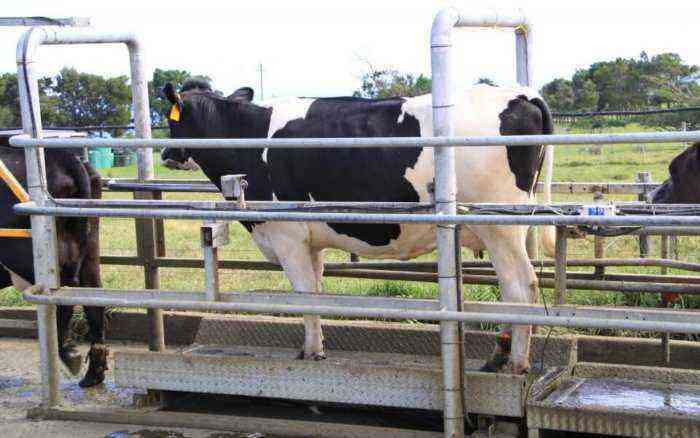Various animal diseases cause great damage to the farm. The danger is not only viral infections, but also skin diseases, for example, deprive a cow. Skin diseases caused by fungi spread rapidly and are highly resistant to external influences. Having found lichen on the body of a calf or an adult, treatment should be started immediately.
Ringworm in cows
What is ringworm?
This disease is caused by two types of fungi – Microsporum and Trichophyton mentagrophytes. Both types of fungus, penetrating the skin, have similar symptoms of the disease. That is why in medical practice they were combined, giving a common name – ringworm.
Attention! In cows, trichophytosis is more common, that is, damage by Trichophyton fungi, which are often carried by rodents.
Infection usually occurs through contact with a sick animal, through objects – a feeder, drinker, bedding. The fact is that the causative agents of ringworm, microscopic fungi, are highly resistant. They are able to survive on exfoliated skin particles, pet brushes and other items for several years.
The name “ringworm” accurately characterizes the main manifestation of the disease. Spots appear on the skin of animals, on which the hair looks like it was cut with scissors. And all because the fungus destroys the hair follicles.
Causes and symptoms
The main cause of infection with ringworm is a reduced immune system. Cows with high body resistance in the absence of provoking factors are rarely susceptible to infection. Other causes of the development of the disease:
- Microtrauma of the skin.
- Unsanitary conditions in the room.
- Close contact with a sick individual.
- Rodents in the stall.

Rodents in a stall
Consider how lichen manifests itself in a calf or an adult cow:
- Single or multiple lesions, bald spots appear on the body.
- The skin on them peels off, crusts with a gray coating may appear.
- In the future, the area of the lesion gradually increases.
- As a result of the defeat of the hair follicles by the fungus, hair falls out.
Attention! In advanced cases, sick animals become restless, lose their appetite, and weight gain stops.
Diagnostics
In most cases, a visual examination of the cow is enough to make a diagnosis, since ringworm has characteristic features. Sometimes, in order to exclude other skin diseases, it is necessary to take samples of the affected tissue for analysis. To do this, take skin flakes and hairs, tearing them out along with the bulb.
The veterinarian pays attention to the form in which the disease proceeds:
- In the erased
- Surface.
- Deep.
- Bubbly.
Reference. In adults, the disease is milder, as their immune system is able to resist infection. In young animals, immunity is weaker, the fungus most often penetrates into the deep layers of the epidermis, so calves often suffer from a deep and blistering form of ringworm.
Treatment for ringworm in cows
It is necessary to treat lichen in calves and adult cows in a complex way. Therapy includes:
- Vaccination.
- Treatment of affected areas with antifungal agents.
- Taking drugs against the fungus inside.
- Immunotherapy.
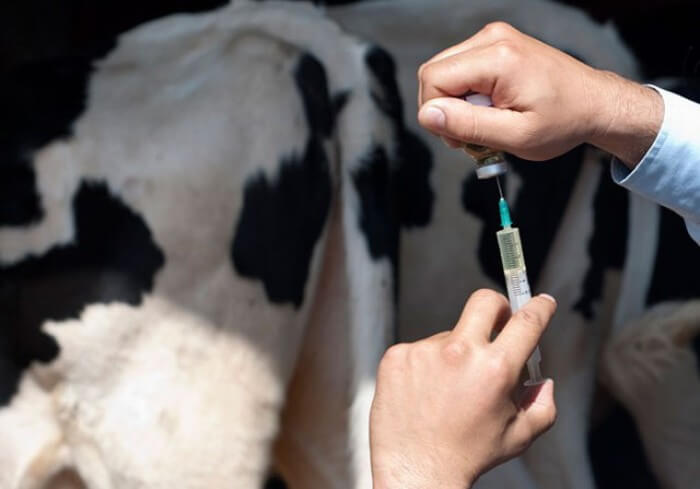
Vaccination of cattle
The infected animal is separated from healthy individuals. The room where the sick cow was kept should be carefully treated from spores of the fungus. For this, disinfecting solutions are used, for example, formalin at a concentration of 5% or a solution of bleach at a 20% concentration. To prevent the spread of infection throughout the body, veterinarians recommend vaccinating the animal twice or three times with an interval of 14 days.
Further, antifungal drugs and keratolytic agents are used together. List of medicines for lichen for topical use:
- Spray “Zoomikol”.
- Ointment “Yam Fungibak”.
- “Imaverol” suspension for the treatment of lesions.
For the rapid regeneration of tissues damaged by the fungus, the following means are used:
- Salicylic alcohol or acid.
- Iodine.
- Greens.
- Sulfur ointment.
Treatment should be accompanied by stimulation of the cow’s immune system. To do this, diversify the diet and introduce vitamins into it.
Lichen treatment at home
A sick animal needs to improve its diet and vitamins. The treatment of this disease is quite long, so you should be prepared to fight it hard, regularly treating the skin areas affected by the fungus.
For local treatment, you can use any of the above products containing antifungal components – clotrimazole, ketoconazole, terbinafine. Before applying the ointment or suspension to the skin, it is necessary to remove the keratinized scales. For this, the affected area is washed with warm water, and then coarse growths are cleaned off with a brush. Then the lichen is smeared with an antifungal compound. This should be done according to the scheme, which is given in the instructions for the drug. You can not skip the application of the composition.

Clotrimazole
Treatment at home continues for another three weeks after the disappearance of the symptoms of the disease.
Attention! Ringworm is transmitted to humans, so all procedures must be carried out with gloves and overalls.
For the treatment of ringworm, folk remedies are also used. Let’s consider them.
- Tar ointment is prepared as follows – they take one part of tar and mix it with 5 parts of petroleum jelly. The ointment is applied in the morning and evening.
- A disinfectant composition can also be made with turpentine. In this case, one part of the tar is combined with two parts of turpentine.
- Copper sulfate – 1 part, lime – 2 parts, sulfur – 3 parts. All components are mixed and lichen is lubricated with this composition.
It is important to understand that the treatment of this disease requires regularity and patience, since the fungus is very resistant.
Prevention
Preventive measures will protect livestock from ringworm. What do we have to do:
- Maintain cleanliness in the paddock.
- Fight rodents.
- Periodically inspect animals for timely detection of lichen.
- Vaccinate all livestock at risk but not yet infected with TF-130, LTF-130 or TF-130K.
Reference. The vaccine is administered 2 or 3 times with a break of 10-14 days. For sick individuals, a double dosage is used.
Ringworm is dangerous because it quickly spreads through the body of the animal, affecting an increasing area of the skin. The fungus depresses the immune system of the cow and increases the risk of bacterial infection. That is why treatment must be started immediately and completed. Particular attention should be paid to preventive measures to protect healthy animals from this unpleasant disease.
